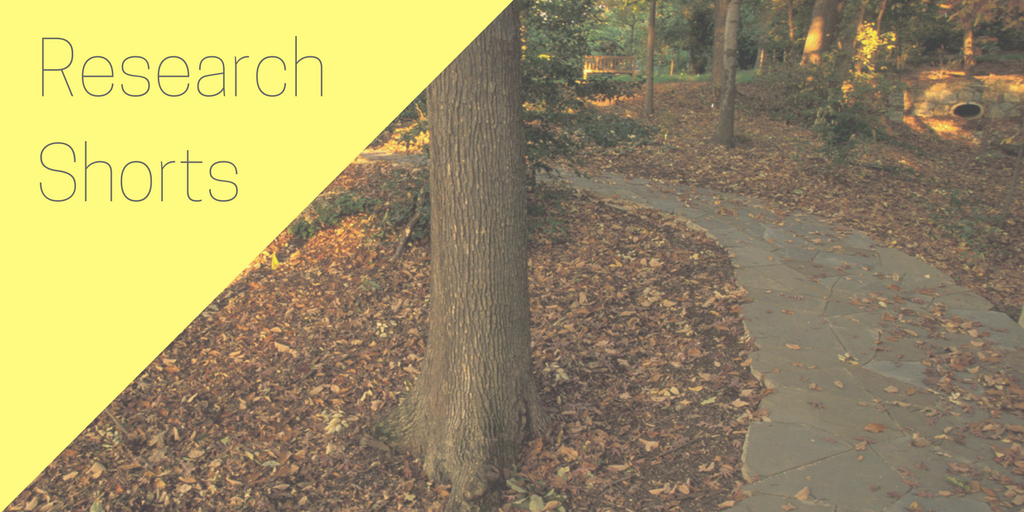At Nature Sacred, we keep a close eye on the academic research being published around nature, health, and wellbeing. Via Research Shorts, each month we take what we see as some of the most interesting work being published and create a brief summary for our readers — enabling you to be in the know, even if you’re short on time.
A Brief Summary of the Research
In a study out of the UK, park visitors were most impressed and excited by colorful flower displays but felt most relaxed among subtle variations in green plantings. Visual cues that a green space provided pollinator habitat, even if ‘messy’, mattered to visitors.
In the August 2017 article, available for free online, a research group surveyed over 1400 people who walked through urban plantings of varying structure, species character and percentage flower cover. Green spaces typically vary among these dimensions, but health research has generally treated all green spaces as the same. For example, an arboretum typically has areas that inspire a “Wow!”, i.e. discrete, obvious structure with distinct sections of native and exotic species. But, a pollinator garden might feature bright wildflowers and messy grasses, appearing wild and complex like a natural prairie.
The findings aid urban planners who want to work with public health agencies to create public green infrastructure which is popular with local people, beneficial to health and well-being, and ecologically biodiverse. The researchers suggest media campaigns urging pollinator protections are evident in their findings. The prevailing assumption among many landscape designers is that people want highly designed spaces, but this is the first study showing people experience more positive emotions knowing a green space provides pollinator habitat.
What you need to know:
- A colorful floral landscape excites more than it relaxes, but how many flowers matters.
- Subtle green plantings provide the greatest restorative effect.
- Local culture and dialogue may influence preference for “natural” vs “highly designed” landscapes.
- Previous research suggests visitors prefer highly designed spaces.
A word from one of the authors:
“Our findings suggest that in the UK increasing public exposure to naturalistic meadow-style planting and its pollinator benefits may be increasing public acceptability of a more ‘messy’ urban planting aesthetic…”

